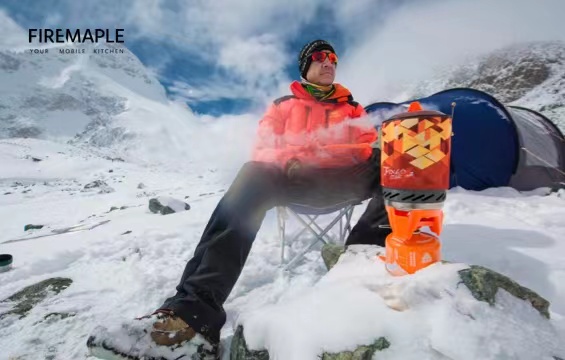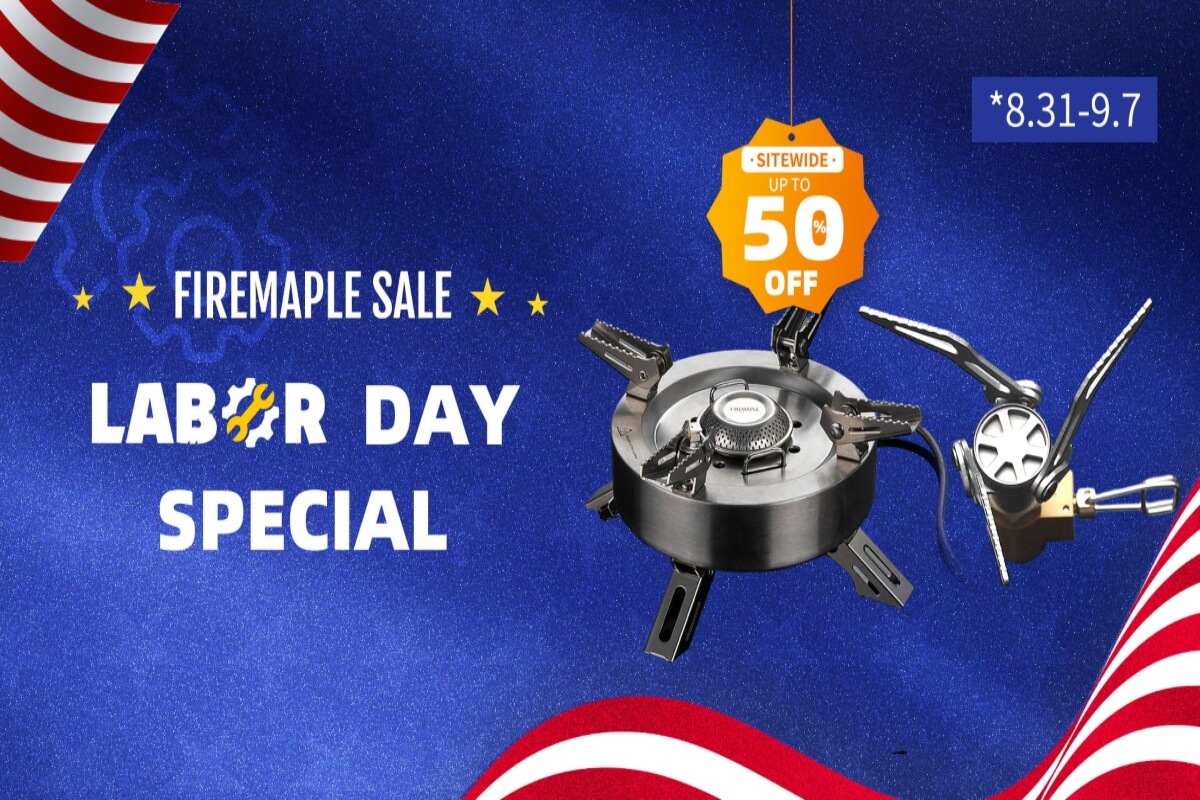Outdoor stoves and cookware are essential tools for cooking and preparing meals in outdoor settings, such as camping, hiking, backpacking, picnicking, and more. They are designed to be portable, lightweight, and durable to withstand the rigors of outdoor use. Here’s an overview of outdoor stoves and cookware:
1. Outdoor Stoves:
- Camp Stoves: These are versatile stoves that use a variety of fuels, including propane, butane, white gas, and wood. They are designed for stability and often come with adjustable burners to control heat.
- Backpacking Stove: Lightweight and compact, backpacking stoves are ideal for hikers and campers who need to carry their gear. They often use canister fuels, alcohol, or solid fuel tablets.
- Wood Burning Stove: These stoves use sticks, twigs, and other natural fuels, making them eco-friendly and cost-effective. They are suitable for camping in areas with readily available wood.
- Multi-Fuel Stoves: These stoves can burn various types of fuels, offering flexibility in different outdoor environments.
- Jetboil: Known for their efficiency, Jetboil stoves are designed to boil water quickly. They are popular among backpackers and mountaineers.
2. Cookware:
- Cooking Pots and Pans: Outdoor cookware is typically made of lightweight materials like aluminum or stainless steel. They often have folding handles for easy packing.
- Cooking Utensils: Compact utensil sets may include a spatula, spoon, fork, and knife, designed for outdoor cooking and eating.
- Camping Cookware Sets: These sets often include a combination of pots, pans, mugs, plates, and utensils, providing a complete outdoor cooking solution.
- Mess Kits: These are all-in-one kits that include cookware, plates, and utensils, designed to minimize bulk and weight.
3. Features to Consider:
- Size and Weight: Portability is crucial for outdoor cookware and stoves, so look for lightweight and compact options.
- Fuel Type: Choose a stove that suits your preferred fuel type and the availability of fuel in your outdoor environment.
- Heat Output: Consider the stove’s heat output in BTUs (British Thermal Units) or its ability to boil water quickly if that’s a priority for you.
- Durability: Outdoor cookware should be rugged and able to withstand outdoor conditions and rough handling.
- Wind Protection: Some stoves come with windshields or built-in wind protection to maintain consistent heat output in windy conditions.
- Ease of Use: Look for stoves and cookware that are easy to set up, ignite, and clean.
- Price: Outdoor stoves and cookware come in a range of prices, so consider your budget and needs when making a selection.
Also Read: Outdoor cooking
This post contains affiliate links. By purchasing through these links and using my discount codes, you’re supporting the channel with no additional cost to your purchase. It’s greatly appreciated.

MARS RADIANT STOVE SYSTEM $129.95
When choosing outdoor stoves and cookware, it’s essential to match your equipment to your specific outdoor activities and cooking preferences. Whether you’re a backcountry explorer or a casual camper, there are options available to suit your needs for outdoor cooking.
Outdoor Stoves:
Outdoor stoves are a crucial piece of equipment for cooking and preparing meals in outdoor settings. They come in various types, each with its features and benefits. Here are some popular types of outdoor stoves:
1. Camp Stove:
- Fuel Types: Camp stoves can be powered by various fuels, including propane, butane, white gas, and even wood.
- Design: They typically have stable, foldable legs, multiple burners for cooking different items simultaneously, and adjustable flame control.
- Ideal for: Camp stoves are versatile and suitable for car camping, base camping, and cooking larger meals for groups.
2. Backpacking Stove:
- Fuel Types: Backpacking stoves are designed for lightweight travel and often use canister fuels (isobutane or propane), alcohol, or solid fuel tablets.
- Design: They are compact, lightweight, and often have a simple design with a single burner and minimal parts.
- Ideal for: Backpacking stoves are perfect for hikers and backpackers who need to carry their cooking equipment over long distances.
3. Wood Burning Stove:
- Fuel Types: Wood-burning stoves use natural materials like sticks, twigs, and pinecones as fuel, making them eco-friendly and cost-effective.
- Design: They are typically compact and designed to efficiently burn wood while minimizing smoke.
- Ideal for: These stoves are great for camping in areas with abundant wood resources and for those who enjoy a traditional campfire experience.
4. Multi-Fuel Stove:
- Fuel Types: Multi-fuel stoves are versatile and can burn various types of fuels, including liquid fuels like white gas, kerosene, and diesel.
- Design: They are often used in extreme conditions and are built rugged and dependable.
- Ideal for: Multi-fuel stoves are suitable for international travel, mountaineering, and expeditions where fuel availability can be unpredictable.
5. Jetboil:
- Fuel Types: Jetboil stoves are designed for fast and efficient boiling of water, primarily using propane or isobutane canisters.
- Design: They have a unique integrated cooking system with a pot and burner, allowing for quick cooking and boiling.
- Ideal for: Jetboil stoves are popular among backpackers and mountaineers who prioritize fast and lightweight meal preparation.
Each type of outdoor stove has its advantages and is best suited for specific outdoor activities and conditions. When selecting an outdoor stove, consider factors such as your cooking needs, the type of fuel available, weight restrictions, and the environmental impact of your choice.
Cookware:
Outdoor cookware is essential for preparing meals when camping, hiking, backpacking, or engaging in any outdoor activity. These cookware sets are designed portable, durable, and efficient. Here are some key aspects of outdoor cookware:
1. Cooking Pots and Pans:
- Materials: Outdoor pots and pans are typically made from lightweight and durable materials like aluminum, stainless steel, or titanium. Each material has its advantages, with titanium being the lightest and stainless steel being the most durable.
- Size: Consider the size of the pots and pans based on the number of people you’ll be cooking for and the types of meals you plan to prepare.
- Lids: Many cookware sets include lids that help retain heat and can serve as a plate or bowl.
- Handles: Look for cookware with foldable or detachable handles for compact storage and easy transport.
2. Cooking Utensils:
- Utensil Sets: Outdoor utensil sets typically include a spatula, spoon, fork, and sometimes a knife. These are designed to be lightweight and compact.
- Material: Look for utensils made from heat-resistant materials like nylon or silicone.
- Design: Some utensils have multifunctional features, such as integrated bottle openers or can openers.
3. Camping Cookware Sets:
- Complete Sets: Camping cookware sets often include a combination of pots, pans, mugs, plates, bowls, and utensils, providing a comprehensive cooking and dining solution.
- Nested Design: Many camping cookware sets are designed to nest within each other for efficient packing and reduced bulk.
4. Mess Kits:
- All-in-One: Mess kits are compact and all-in-one solutions that include cookware, plates, and utensils, minimizing the number of items you need to carry.
- Compact: They are designed to be space-saving and are ideal for solo or minimalist campers.
5. Specialized Cookware:
- Grill Plates: Some outdoor cookware sets include grill plates or griddles for cooking meat and vegetables over an open flame.
- Coffee Pots: Coffee enthusiasts can find specialized coffee pots designed for making coffee over a campfire or portable stoves.
- Bakeware: For those who enjoy baking outdoors, bakeware sets are produced for use with portable stoves.
6. Durability and Maintenance:
- Outdoor cookware should built to withstand outdoor conditions, including high heat, cold temperatures, and rough handling.
- Non-stick coatings can make cooking and cleaning easier, but they may wear off over time.
- Look for cookware that is easy to clean and maintain, as outdoor conditions can sometimes be challenging.

When choosing outdoor cookware, consider the size of your group, the type of meals you’ll be preparing, and the weight and space constraints of your outdoor adventure. Investing in durable, high-quality cookware will ensure that you can enjoy delicious meals in the great outdoors for many trips to come.


Leave a Reply